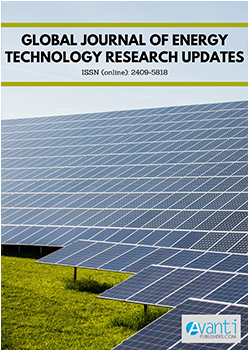Abstract
Increasing the efficiency of photovoltaic panels (PV) is one of the important goals of researchers worldwide in the field of renewable resources. The important results obtained in the case of finding new materials for the manufacturing of the panels to obtain the highest possible conversion efficiency must be doubled by research for developing methods for efficient real-time monitoring of PV operation in order to rapidly or in advance identify possible failures.
This paper looks for some types of failures and how they can be identified as quickly as possible from the information coming from different sources, the most important being the PV monitored parameters, the PV control system parameters, and from different cloud services.
One way to identify different types of failures is to use machine learning (ML) methods. In applying these methods, an important thing is the availability of a great number of good training data sets. In order to obtain such data sets, this paper aims to create a model of PV using Matlab, which is fed with both real data and data synthesized using fault models. A number of four simulation cases were considered which take into account the normal operation of the photovoltaic panels, their malfunction due to a failure (two different types of failures were considered), and the malfunction of the panels due to the appearance of the two types of failures simultaneously, using input data that was partially measured and partially generated in Matlab. The outputs of these model simulations will be used for training the ML model.
References
Schwingshackl C, et al. Wind effect on PV module temperature: Analysis of different techniques for an accurate estimation. Energy Procedia, 2013; 40: pp. 77-86. https://doi.org/10.1016/j.egypro.2013.08.010
Yuan C, Dong C, Zhao L, Yan X. Marine environmental damage effects of solar cell panel. in 2010 Prognostics and System Health Management Conference, 2010; pp. 1-5.
Belik M. PV panels under lightning conditions. in Proceedings of the 2014 15th International Scientific Conference on Electric Power Engineering, EPE 2014; pp. 367-370. https://doi.org/10.1109/EPE.2014.6839446
Salem F, Awadallah MA. Detection and assessment of partial shading in photovoltaic arrays. J Electr Syst Inf Technol, 2016; 3(1): pp. 23-32. https://doi.org/10.1016/j.jesit.2015.10.003
Niknam PH, Mokhtarani B, Mortaheb HR. Prediction of shockwave location in supersonic nozzle separation using self-organizing map classification and artificial neural network modeling. J Nat Gas Sci Eng. 2016; 34: pp. 917-924. https://doi.org/10.1016/j.jngse.2016.07.061
Moustafa EB, Hammad AH, Elsheikh AH. A new optimized artificial neural network model to predict thermal efficiency and water yield of tubular solar still. Case Stud Therm Eng. 2022; 30. https://doi.org/10.1016/j.csite.2021.101750
Elsheikh AH, Sharshir SW, Abd Elaziz M, Kabeel AE, Guilan W, Haiou Z. Modeling of solar energy systems using artificial neural network: A comprehensive review. Sol Energy 2019; 180: pp. 622-639. https://doi.org/10.1016/j.solener.2019.01.037
Ali MH, Rabhi A, El Hajjaji A, Tina GM. Real Time Fault Detection in Photovoltaic Systems. Energy Procedia 2017; 111: pp. 914-923. https://doi.org/10.1016/j.egypro.2017.03.254
Sarikh S, Raoufi M, Bennouna A, Benlarabi A, Ikken B. Fault diagnosis in a photovoltaic system through I-V characteristics analysis. 2018 9th Int. Renew. Energy Congr. IREC 20181. Sarikh S, Raoufi M, Bennouna A, Benlarabi A, Ikken B. Fault diagnosis a Photovolt. Syst. through I-V Charact. Anal. 2018 9th Int Renew Energy Congr IREC 2018. 2018; 21: 1-6. https://doi.org/10.1109/IREC.2018.8362572
Kim GG, et al. Prediction Model for PV Performance with Correlation Analysis of Environmental Variables. IEEE J Photovoltaics, 2019; 9(3): pp. 832-841. https://doi.org/10.1109/JPHOTOV.2019.2898521
Gow JA. Development of a model for photovoltaic arrays suitable for use in simulation studies of solar energy conversion systems. 2005; pp. 69-74.
Piccoli E, Dama A, Dolara A, Leva S. Experimental validation of a model for PV systems under partial shading for building integrated applications. Sol Energy 2019; 183: pp. 356-370. https://doi.org/10.1016/j.solener.2019.03.015
Bimenyimana S, Asemota GNO, Kemunto MC, Li L. Shading effects in photovoltaic modules: Simulation and experimental results. in 2017 2nd International Conference on Power and Renewable Energy, ICPRE 2017, 2018; pp. 904-909. https://doi.org/10.1109/ICPRE.2017.8390665
Mathworks. Partial shading of a PV module. [Online]. Available: https://www.mathworks.com/help/physmod/sps/examples/partial-shading-of-a-pv-module.html. [Accessed: 10-Jun-2020].
Awasthi A, et al. Review on sun tracking technology in solar PV system. Energy Reports, 2020; 6: pp. 392-405. https://doi.org/10.1016/j.egyr.2020.02.004
Mason K, Reno MJ, Blakely L, Vejdan S, Grijalva S. A deep neural network approach for behind-the-meter residential PV size, tilt and azimuth estimation. Sol Energy 2020; 196: pp. 260-269. https://doi.org/10.1016/j.solener.2019.11.100
Machidon D, Oprea R, Istrate M. Considerations on the Opportunity of Using Various Optimum Tilt Angles for Fixed Photovoltaic Panels in Iasi. Bul Inst Polit Iasi 2019; 69(3): pp. 79-92.
Deger Energie. DEGER TOPtracker® 40NT Single Axis Tracking System, Technical Data. 2013.
Deger Energie. DEGERtraker 5000NT Dual Axis Tracking System, Data Sheet. 2011.
Deger A, Durr M, Zanker G. Lightweight Solar Module Tracking Device. US2016218662 (A1), 2002.
Guler N, Irmak E. MPPT based model predictive control of grid connected inverter for PV systems. 8th Int. Conf. Renew. Energy Res. Appl. ICRERA 2019; pp. 982-986. https://doi.org/10.1109/ICRERA47325.2019.8997105
Haba CG. Monitoring Solar Panels using Machine Learning Techniques. in Proceedings of 2019 8th International Conference on Modern Power Systems, MPS 2019, 2019. https://doi.org/10.1109/MPS.2019.8759651

This work is licensed under a Creative Commons Attribution-NonCommercial 4.0 International License.
Copyright (c) 2021 Cristian-Gyozo Haba




